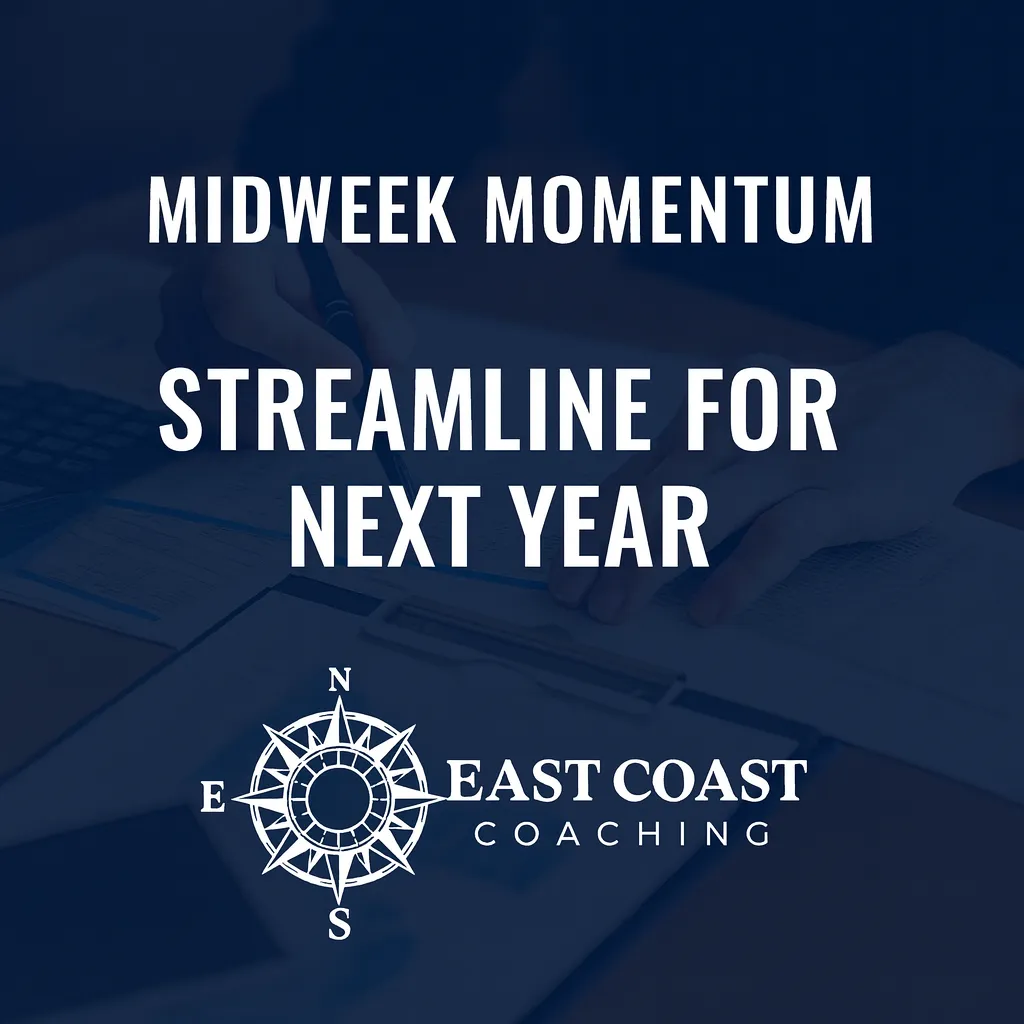
How Advisors Streamline for Next Year: Tools, Reviews, and Team Rhythm
As the year winds down, the best advisory firms aren’t just wrapping up, they’re reloading. Streamlining for the new year isn’t about buying more software or holding a longer offsite. It starts with clarity: knowing exactly where you are, what’s working, what’s not, and how your team can operate more efficiently together.
If you want to lead January with focus instead of fatigue, here’s how to run a firm-wide review that creates momentum, not burnout.
Step 1: Collect the Right Inputs Before You Plan
Before you can streamline anything, you need a clear picture of your business, both in sales and operations. That means gathering data and insights from your team.
Many advisors wait until they’re in the room to start reflecting. That’s a mistake. Great annual planning starts before the meeting, with thoughtful prep. By asking the right questions in advance, you surface blind spots, reduce meeting bloat, and elevate the conversation.
1. Share the Strategic Plan
Start by sending your existing 10-year strategic plan (or the most updated version) to your team. Think of this as your lighthouse. When your team can see where you’re headed long term, they’re more equipped to evaluate short-term actions in context. It grounds every conversation in purpose.
If you’ve never documented your long-range plan, don’t panic. This is a great time to begin. Start with a simple vision: where do you want the firm to be in 10 years? Then reverse engineer from there.
2. Ask for Role Reviews
Next, invite each team member to reflect on their current role: What’s working well? What’s not working? Where are the gaps in execution, clarity, or alignment?
Encourage honest, constructive feedback, not just about their own roles, but also about team dynamics and overlaps. When people feel heard at this stage, they’re more likely to buy into change later.
3. Gather Independent Issue Lists
Ask every team member to privately answer this question:
What issues do you see in the firm as it stands today?
This is crucial. By collecting input before the group meeting, you minimize groupthink and surface insights from quieter voices. Make it safe for them to name friction points, inefficiencies, or missed opportunities.
You’re not just solving operational problems; you’re building a culture of transparency.
4. Ask for Solutions
Finally, ask team members to propose one or more initiatives they believe would address the issues they identified.
This isn’t about perfect strategy, it’s about inviting ownership. When people participate in shaping solutions, they commit to the outcome. Even if their ideas aren’t implemented exactly as proposed, the process builds buy-in.
Step 2: Run a High-Impact Planning Meeting
With everyone prepared, the annual meeting becomes more than a checklist. It becomes a strategic engine.
Here’s a proven agenda I use with advisory firms during year-end sessions:
Review the Current Strategic Plan - Anchor the conversation in your long-term vision. Remind the team why the firm exists and where you’re going. Check for alignment.
Update On Current Year Initiatives - Discuss current progress. What’s moving forward? What’s stalled? What needs to be adjusted or scrapped?
Adjust The Strategic Plan - Strategy isn’t static. It’s responsive. Use this time to revisit your 10-, 5-, and 3-year plans based on what you’ve learned this year.
Roles & Responsibilities Check-In - Facilitate an open, structured conversation. What’s working? Where are the breakdowns? Are roles clearly defined and properly resourced?
Current Firm Issues - Share and group the issues submitted in advance. Look for patterns. Use this time to dig beneath symptoms and get to root causes.
Initiatives & Role Adjustments - What changes will make the biggest impact? Consider process improvements, new roles, or priority shifts. Decide what to keep, what to delegate, and what to change. This stage should yield 8–12 tangible projects for the coming year, clearly linked to the issues and opportunities you've uncovered. These become your roadmap.
Action Items & Timeline - From your broader list of projects, narrow down to 3-5 high-priority Q1 initiatives (3 is ideal). These are your launchpad for the year.
Don’t leave the room without decisions. Assign owners. Set timelines. Create follow-ups. Make sure every initiative has a clear owner and a clear path to execution.
Streamlining Starts With Listening
Streamlining isn’t about doing more faster. It’s about doing the right things, together.
The best advisory firms don’t just talk about efficiency. They co-create it. They empower teams to identify what’s not working and then align on how to fix it. They make time for hard conversations. They invest in structure and rhythm.
This process, collecting, reviewing, and deciding, is the cornerstone of a high-functioning team. Done well, it leads to less stress, better focus, and a calendar that reflects your values.
You don’t need a polished plan to start, just the right questions, the right structure, and the space to think clearly. That’s where I come in. Hi, I’m Stacy, a business coach for financial advisors. I help advisors break through the chaos, scale smarter and build a business that runs – without running you into the ground.
Leading a growing firm? Book a private strategy session with Stacy Arsenault to clarify your next phase of growth: https://eastcoastcoaching.com/one-on-one?utm_source=blog&utm_medium=post&utm_campaign=ECC2025


